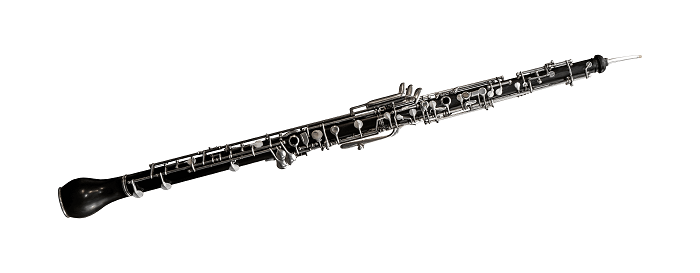What Are the Most Effective Ways to Teach Expression on English Horn?

The English horn is a unique woodwind instrument known for its rich, haunting tone. Teaching expression on this instrument requires attention to tone, dynamics, phrasing, and musicality. Beginners and advanced players alike benefit from guidance in shaping their sound. Unlike other instruments, the English horn demands careful control of breath, embouchure, and resonance. This article explores the most effective ways to teach expression on the English horn and how instructors can help students develop a more expressive performance style.
Understanding the English Horn
Tone and Range
The English horn is a member of the oboe family. It has a lower, more mellow tone than the standard oboe. Its range allows for lyrical melodies and expressive solos. Teachers must help students understand how to produce a full, resonant sound across the instrument’s range. Proper posture, hand position, and breathing are essential.
Unique Challenges
The English horn presents unique challenges. The longer tube and wider bell make intonation more sensitive. Beginners often struggle with consistent tone and control. Students also need guidance on how to use vibrato effectively. Understanding the instrument’s physical characteristics is the first step in teaching expression.
Developing a Singing Tone
Breath Control
Breath control is critical for expressive playing. Students should learn to support the sound with steady airflow. Exercises in long tones help develop control and strength. Teachers can encourage students to think of each note as a vocal phrase. This approach improves musicality and expression.
Embouchure Adjustment
The embouchure directly affects tone quality. Instructors should demonstrate subtle adjustments to lip tension and reed placement. A relaxed embouchure allows for smooth phrasing and dynamic range. Students should experiment with small changes to find the most resonant and expressive tone.
Teaching Phrasing
Musical Sentences
Phrasing is the way a musician shapes a series of notes to convey emotion. Teachers can explain that musical sentences have beginnings, climaxes, and endings. Students should practice breathing at natural points in the melody. Understanding the structure of a phrase makes playing more expressive.
Dynamic Contrast
Dynamics add depth to musical expression. Students should practice crescendos and decrescendos within phrases. Teachers can encourage experimentation with softer and louder passages. Controlled dynamic changes enhance the emotional impact of each phrase.
Using Vibrato Effectively
Subtle Oscillation
Vibrato adds warmth and emotion to the English horn’s tone. Instructors should teach slow, controlled oscillations of pitch. Vibrato should not be forced but produced naturally with breath support and lip flexibility. Beginners often start with a slow vibrato and gradually increase speed.
Musical Application
Vibrato must be used in context. Teachers can select expressive passages from orchestral or solo repertoire. Students learn where vibrato adds intensity or sensitivity. Proper vibrato helps convey mood without overwhelming the melody.
Encouraging Emotional Connection
Storytelling Through Music
Expressive playing requires emotional engagement. Teachers should encourage students to imagine the story behind a piece. Understanding the character or mood of a composition helps shape dynamics, phrasing, and articulation. This approach makes playing more authentic.
Performance Practice
Students should perform frequently, even in small settings. Performing helps them translate practice techniques into expressive playing. Teachers can provide feedback on emotional delivery as well as technical accuracy. Over time, students develop confidence in their musical expression.
Articulation and Tone Color
Varied Articulations
Articulation influences expression. Instructors should teach legato, staccato, and accented notes. Mixing articulations within phrases creates contrast and interest. Beginners often benefit from practicing simple scales with different articulations to develop control.
Exploring Tone Color
Tone color or timbre adds personality to the music. The English horn can produce dark, mellow sounds or brighter, more penetrating tones. Teachers should guide students in experimenting with mouthpiece angle, air speed, and reed strength. Exploring tone color enhances expressive possibilities.
Repertoire Selection
Choosing Expressive Pieces
The choice of repertoire is critical for teaching expression. Pieces with lyrical lines, slow melodies, or contrasting dynamics are ideal. Classical works, romantic solos, and orchestral excerpts offer opportunities to practice tone, phrasing, and vibrato. Instructors can gradually increase complexity as students improve.
Encouraging Interpretation
Students should be encouraged to interpret pieces personally. Teachers can suggest phrasing ideas, but students should also explore their own musical instincts. This balance develops individuality and expressive depth.
Using Recording and Feedback
Self-Assessment
Recording practice sessions allows students to hear themselves objectively. Instructors can guide students to identify areas for improvement. Listening back helps develop awareness of tone, vibrato, phrasing, and dynamics.
Constructive Feedback
Feedback should be specific and encouraging. Teachers can highlight successful expressive moments and suggest adjustments. Constructive feedback motivates students and reinforces effective techniques.
Conclusion
Teaching expression on the English horn requires attention to tone, phrasing, dynamics, vibrato, and emotional engagement. Breath control, embouchure adjustments, and articulation are essential for shaping sound. Repertoire selection, performance practice, and feedback support the development of expressive skills. By focusing on these elements, instructors can help students transform technical proficiency into meaningful musical expression. With consistent practice and guidance, beginners and advanced players alike can explore the full expressive potential of the English horn.
- Art
- Causes
- Crafts
- Dance
- Drinks
- Film
- Fitness
- Food
- Jogos
- Gardening
- Health
- Início
- Literature
- Music
- Networking
- Outro
- Party
- Religion
- Shopping
- Sports
- Theater
- Wellness



